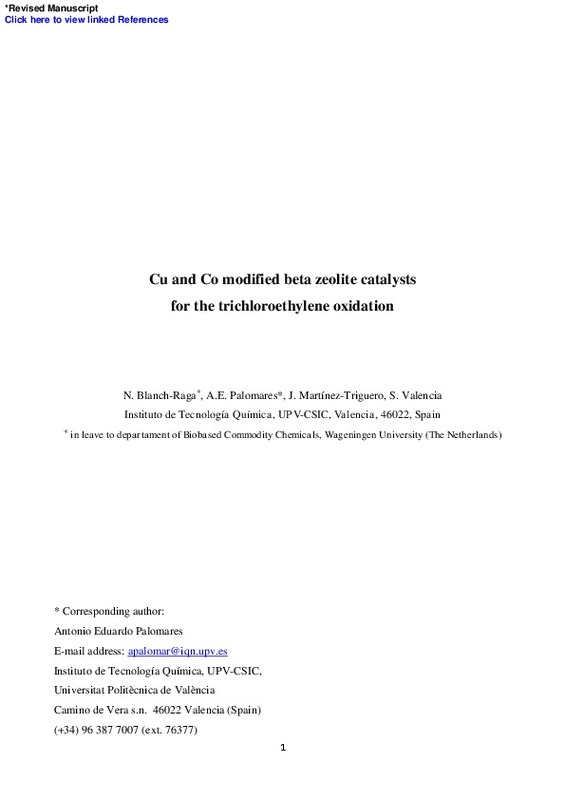JavaScript is disabled for your browser. Some features of this site may not work without it.
Buscar en RiuNet
Listar
Mi cuenta
Estadísticas
Ayuda RiuNet
Admin. UPV
Cu and Co modified beta zeolite catalysts for the trichloroethylene oxidation
Mostrar el registro completo del ítem
Blanch Raga, N.; Palomares Gimeno, AE.; Martínez Triguero, LJ.; Valencia Valencia, S. (2016). Cu and Co modified beta zeolite catalysts for the trichloroethylene oxidation. Applied Catalysis B: Environmental. 187:90-97. https://doi.org/10.1016/j.apcatb.2016.01.029
Por favor, use este identificador para citar o enlazar este ítem: http://hdl.handle.net/10251/87952
Ficheros en el ítem
Metadatos del ítem
| Título: | Cu and Co modified beta zeolite catalysts for the trichloroethylene oxidation | |
| Autor: | Blanch Raga, Neus | |
| Entidad UPV: |
|
|
| Fecha difusión: |
|
|
| Resumen: |
[EN] In this work we have studied for the first time the catalytic activity for the oxidation of trichloroethylene (TCE) of Cu and Co beta zeolites. The results show that they are active and selective towards CO2, obtaining ...[+]
|
|
| Palabras clave: |
|
|
| Derechos de uso: | Reserva de todos los derechos | |
| Fuente: |
|
|
| DOI: |
|
|
| Editorial: |
|
|
| Versión del editor: | http://doi.org/10.1016/j.apcatb.2016.01.029 | |
| Código del Proyecto: |
|
|
| Agradecimientos: |
The authors wish to thank the Spanish Ministry of Economy and Competitiveness through the MAT-2012-38567-C02-01 and to the DGICYT through the project CTQ2012-37925-C03-1 for the financial support. N.B.R. acknowledges Catedra ...[+]
|
|
| Tipo: |
|






![[Cerrado]](/themes/UPV/images/candado.png)



